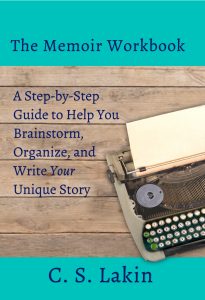Writing Authentic Dialogue in Memoir
Dialogue is the epitome of “showing” instead of telling. Dialogue brings characters to life and engages readers. If we have no dialogue in our “scenes,” those long descriptive paragraphs will get boring. These basic tenets apply to fiction as well as in memoir.
Dialogue adds “white space” to our pages, makes the reading move quickly, and helps keep our story from becoming cumbersome.
But dialogue can be boring, right? And who can accurately remember every word of a conversation? If you’ve ever had a fight with a friend or spouse, you know that it only takes a minute or two to forget something that had just been said—especially when it’s a hot, emotional argument. I’ve often blurted, “But you just said . . . !” and my spouse replied, “No way! I did not!”
Needless to say, we often have selected memory.
Unless you have tape-recorded every moment of your past, you are not going to remember, word for word, what was said.
And here’s another point: you wouldn’t want to repeat exactly what was said in a given situation, because, for the most part, much of what we say is boring and repetitive.
Fiction writers learn the technique of distilling dialogue. What this means is exactly what it sounds like. Dialogue should present the gist of what needs to be said, minus the ums and uhs and unimportant stuff. No one likes to engage in boring conversation, so it stands to follow they wouldn’t want to read it either.
Adding in realistic, dynamic, maybe humorous dialogue is the key to a terrific memoir.
Don’t be afraid to “put words in someone’s mouth,” even your own. That’s what you have to do. That’s what good memoirists do. You want to be true and faithful to the intent of what’s being said, and honestly represent those who are speaking.
Recall the conversations to the best of your ability. We all know we have memories that are like colanders—a lot slips out.
As you write dialogue, be sure each person sounds authentic, like himself or herself. Their speech should reflect their education, upbringing, and all the factors that make them who they are.
Here’s a great exercise to get you thinking about dialogue: go to a public place, like a coffee shop or a mall and eavesdrop (respectfully). Listen to how people talk. It’s funny that we don’t tend to pay attention to the way people speak: their diction, vocabulary, sentence structure.
Study Other Memoirs
Here’s a great example of effective, tight dialogue, from Kimberly Rae Miller’s Coming Clean:
“Wow, you girls did a great job,” my mother said.
I didn’t say anything. I couldn’t say anything. I was so angry with them for living this way again.
Rachel took over, talking to my mother about her plans for grad school and her summer job working as a dockmaster on Fire Island.
I watched my father look for some sign of his papers, under couch cushions or in coat pockets. Something to find comfort in.
After Rachel left, the questions started coming.
“Where did you put my box of old Day-Timers?”
“I hope you didn’t throw out my ice-cream maker; it only needed one part to work again.”
I didn’t say anything.
“Oh, you’re not talking to us,” my mom said as if I were seven years old again and being adorably rebellious.
“I’m not talking,” I said. “The refrigerator still needs cleaning.”
Notice how tight and concise the dialogue is, interspersed with brief lines of narrative and action. The writer uses said because that verb, to readers, is “invisible.” We blip over it so that it doesn’t snag our attention, and that’s important.
Use speech verbs like said and asked, instead of fancy verbs, such as extrapolated, cajoled, and elucidated. Those words will distract readers instead of allowing the dialogue to flow naturally.
You don’t need to use a speech verb with every line, if it’s clear who is speaking. Add in beats for reaction where reaction is needed. As we speak to people, we pause to process at certain times. We want our dialogue to reflect this natural behavior. If we don’t, the dialogue will be rapid-fire, sounding more like a comedy sketch than real life.
In Ultramarathon Man: Confessions of an All-Night Runner, Dean Karnazes uses snappy, fast-moving dialogue to set the “runner’s” pace of his story:
Exactly twenty-five minutes later, a dusty pickup truck with oversized tires came barreling down the road. My pizza had arrived. To my surprise, the young manager was behind the wheel.
“Dude!” he cried, jumping out of the car. “You’re mad. This is awesome!”
He pulled the pizza off the passenger seat and opened the box. It was masterfully crafted, almost as high as it was wide, with lots of pineapple and olives piled on top. It looked like something you’d feed a rhinoceros. I paid the tab, thanked him, and prepared to charge on.
“You’re gonna keep running?” he asked. “Don’t you want a lift?”
“Now that I’ve got some fuel,” I answered, holding up the food, “I’m going to put it to good use.”
“But how far are you gonna go?”
“I’m headed to the beach,” I said.
“To the beach!” he cried. “Dude, Bodega Bay’s at least thirty miles from here!”
Actually I was heading to the beach in Santa Cruz—over 150 miles from here—but I didn’t think either of us was prepared to face up to that reality.
“I can’t believe it’s humanly possible to run thirty miles,” he gasped. “Are you like Carl Lewis or something?”
“Ah . . . yeah,” I replied. “I’m like Carl Lewis, only slower.”
“Where will you sleep?”
“I won’t.”
“You’re running straight through the nights? This is insane. I love it!” He jumped back into his truck. “I can’t wait to tell the guys back at the shop.” He sped off.
. . . With the cheesecake stacked on top of the pizza, I started running again, eating as I went.
Here’s another good example of authentic, effective dialogue from Issa Rae’s memoir. Notice how some of the pertinent information is quickly summarized so that only the key parts of the conversation are played out. Pay attention to those pauses she inserts for processing:
“I don’t think you like me very much,” he started.
“What? What are you talking about,” I asked.
“Oftentimes, I will call you and you won’t call me back. Or when I come over to spend time with you, you’ll just go to sleep . . . What are we doing?”
As I listened to him go on about what he wasn’t getting from me in our “relationship,” I grew confused—what was this?
I opted for the truth. “Honestly, I thought we were just . . .” What were the French words for “friends with benefits”?
“What did you think we were ‘just’?” he insisted.
I scrambled to put words together without sounding vulgar. It was the first language-barrier issue we’d encountered. I kept repeating the words in English, hoping he’d understand . . . but the more and more I said it, the dumber I felt. Frustrated, he proposed a solution. “I think we should stop seeing each other, since you don’t like me.”
I was shocked. I had never been broken up with before, much less from someone with whom I didn’t even know I was in a relationship. . . .
“If that’s what you think is best.”
 Notice, also, that when writing dialogue, every time you switch speakers, you begin a new paragraph. That is the simplest way to be clear who is speaking.
Notice, also, that when writing dialogue, every time you switch speakers, you begin a new paragraph. That is the simplest way to be clear who is speaking.
The “rule of three” is helpful when writing dialogue. Don’t go more than three lines without inserting some narrative: a speech tag, gesture, expression, or commentary. It helps keep monotony at bay.
Using dialogue in memoir brings your story to life. Apply these simple tips and dig into the art of dialogue.
Need help with your memoir?
If you are working on your memoir or considering writing one, get The Memoir Workbook! It will help you organize your memories into a compelling and cohesive tale!












Thanks for these tips and insights! I write fiction, but so many of these dialogue suggestions are still applicable. I’m not familiar with the rule of three—really nice, concrete way to think about balancing a scene! I’ve typically struggled reading memoirs because of poor dialogue technique—almost no dialogue at all, or everyone who speaks sounds exactly the same (and not like anyone I’ve ever heard talking, in a bad way!)
As a novelist, I totally agree with Cheryl. Great advice!
In a nonfiction work that I just finished reading, I really enjoyed Sarah Helms’s style in “A Life in Secrets”, her superb biography about spymaster Vera Atkins during WW II. Her interviews of ex-spies, their relatives and various other officials and WW II survivors flowed easily and clearly, with just the right amount of detail to give them tremendous impact and fidelity. She effectively and efficiently conveyed the moods and emotions of all involved, including herself as she was affected by the evolving story.
(And, off topic, a must read for anyone who really wants to understand WW II!)
Another concise post with great examples. Thanks so much!